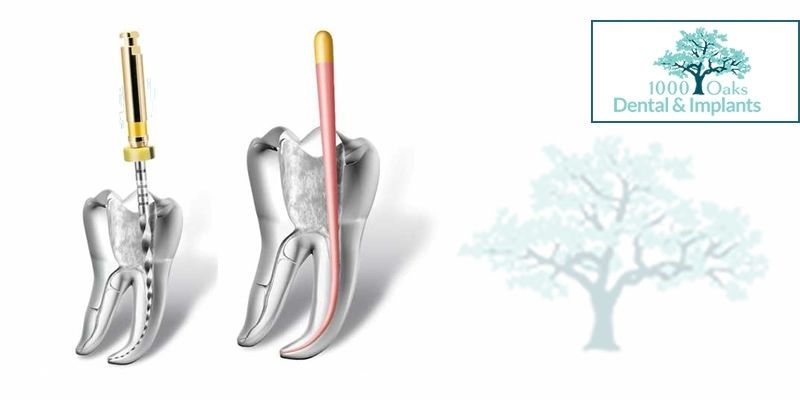Tooth decay is increasingly becoming a common dental issue among many. This condition is usually caused by poor oral hygiene and infections. Human teeth are susceptible to infections because every tooth has a soft cavity at its center.
Tooth decay does not only cause discomfort and pain, but it can also ruin your appearance and smile. A considerable fraction of people in the United States are said to have cavities, and many of them are also facing tooth decay. Many of them are living with this issue and not doing anything about it. Most people do not get it treated due to dental anxiety.
Dental anxiety is pretty common, as many people get anxious about the thought of visiting a dentist, especially when they are faced with the issue of tooth decay. This is because there are only two major solutions to tooth decay that you can rely on – either a root canal or tooth extraction. However, many people do not know the difference between these two tooth decay solutions and the one that will work best for them. Read on to find out which one is suitable for you between root canals and tooth extraction.
Root Canals

If your dentist finds out that your teeth still have a chance, then the procedure to fixing them is root canals. When you develop a deep cavity or your tooth gets cracked, bacteria will find that place as a breeding ground. It can cause a very painful infection. However, if you visit an orthodontist on time and the situation gets caught before it gets too bad, the dentist can save your tooth with a root canal.
Procedure and Aftercare
Sitcoms and Hollywood movies have made a root canal seem worse than it actually is. Root canal treatments are pretty simple. After numbing the affected area, your orthodontic specialist will make an incision in the affected tooth and remove the dead or diseased pulp. After the dentist removes the pulp, they will clean the pulp chambers carefully to ensure no bacteria is left behind. They will use a dental material used in replacing damaged pulp – gutta-percha – to fill the pulp chamber.
Your dentist might also put a crown on top of the affected tooth to help restore its strength and appearance. Depending on the severity of your condition, root canals require multiple visits to the dentist. However, the process is very simple and straightforward, and there is nothing to be scared of about it.
You might feel some pains for the next couple of days after your treatment, and that is absolutely normal. The pain ranges from a mild ache to sharp or even severe pain. You can manage your discomfort and pains with an OTC painkiller. However, if the pain stops and then returns, or it gets too serious for you to handle, you should go and see your dentist.
Risk Involved and Solution
If this process is not done properly, the enamel of the teeth might suffer damage. Besides this, if an infected material is left in the area, it might cause swelling to develop and spread further. To avoid this, you should entrust the procedure to only well-experienced dentists. The dentist you opt for should be able to perform a root canal efficiently and effectively.
Tooth Extraction

If you have tooth decay and you do not take care of it on time, your tooth might worsen to the point of no return. This means that while a dentist can still remove the pulp, the bacteria have eaten into the structure of your tooth to an extent that your tooth will not survive the root canal. If your condition has gotten to this level, then in the debate of root canals vs tooth extraction, your orthodontist will recommend the latter.
Procedure and Aftercare
If it gets to the point of tooth extraction, the first thing your dentist will do is to numb the affected area in order for you not to feel any discomfort during the process. After that, they will use an elevator – a small appliance that looks like a lever – to loosen the affected tooth while it is still in its socket. They will then use forceps to extract the tooth officially. As this is happening, you might feel some pressure. However, this will not leave you uncomfortable during the process.
After the successful extraction of the tooth, you will bite on a piece of gauze for over half an hour to clot the blood flow that usually occurs. You might bleed a little for the first 24 hours after the surgery, which is normal. You might also experience a little bit of facial swelling. If you experience that, you can use an ice pack to reduce inflammation.
For the first couple of days after the procedure, you should only consume cool, soft foods that will not irritate the area that the extraction took place. As your tooth removal healing progresses, you can begin to change your diet gradually. Normally, the tooth extraction healing process takes about two weeks. During this period, you should be mindful of what goes into your mouth and you should also brush gently when cleaning your mouth.
Risks Involved and Solution
Tooth extraction has a risk of infection. The removal of the tooth will leave a space in your mouth, which can be a home for bacteria. This can cause an infection that might spread to other teeth, which might lead to more extractions in the long run. A missing tooth will also affect the neighboring teeth. To prevent this from happening, you should replace the missing tooth with solutions such as dental bridges or dental implants.
Conclusion
After examining the situation, your dentist will tell you the most suitable solution to your damaged or diseased tooth. You should also talk to your dentist if you have any worries about their recommendation. Generally, a root canal is much friendlier and simpler, but once it gets beyond what a root canal can solve, tooth extraction is inevitable.
